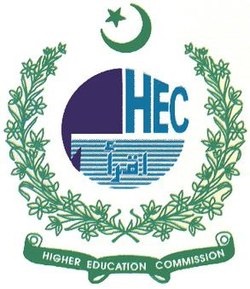Nexus Among Human Capital, Public Expenses and Economic Growth: Empirical Evidence from Developing World
DOI:
https://doi.org/10.61506/01.00057Keywords:
Economic Growth, Public Expenses, Human Capital, FMOLS, DOLSAbstract
Public spending and human capital are always focused on appropriate economic growth via a variety of short and long term methods. In this study, government spending, human capital, and economic growth in 31 developing countries are examined from 1986 to 2017. The long-term connections between public spending, human capital, and economic growth are examined in this study. To do this, the research estimates an empirical model that considers human capital, public investment, and the combined impact of these variables on economic growth. For the unit root, econometric procedures such as the ADF test were employed. Comparably, co-integration has been measured using the Pedroni, Johansen Fisher, and Kao tests. For long-run analysis, the FMOLS and DOLS estimators are employed. In the empirical models, labor force, capital formation, public spending, and human capital are independent variables. Long-run results indicate that labor force, capital formation, public spending, and human capital positively affects economic growth. Significant empirical connection among economic growth, public spending, and human capital is quantified in this study. The results of this evaluation, which took place in 31 developing nations between 1986 and 2017, have a big impact on human capital accumulation and fiscal policy. Regardless of whether the model is estimated using weighted or pooled DOLS estimators or weighted or pooled FMOLS estimators, this relationship is robust from the estimation approach.
References
Abdullah, H., Habibullah, M. S., & Baharumshah, A. Z. (2009). The effect of fiscal variables on economic growth in Asian economies: A dynamic panel data analysis. International Journal of Business and Management, 4(1), 56-69. DOI: https://doi.org/10.5539/ijbm.v4n1p56
Acemoglu, D. (2012). Introduction to economic growth. Journal of economic theory, 147(2), 545-550. DOI: https://doi.org/10.1016/j.jet.2012.01.023
Adu, F., Joseph, O.-M., & Ackah, I. (2014). Government Expenditures and Economic Growth dynamics in Ghana. International Journal of Economics and Empirical Research (IJEER), 2(5), 180-190.
Aghion, P., & Howitt, P. (1992). A model of growth through creative destruction. Econometrica, 60, 323-351. DOI: https://doi.org/10.2307/2951599
Alper, F. O., & Demiral, M. (2016). Public social expenditures and economic growth: Evidence from selected OECD countries. Research in World Economy, 7(2), 44-51. DOI: https://doi.org/10.5430/rwe.v7n2p44
Barro, R. J. (1991). Economic growth in a cross-section of countries. Quarterly Journal of Economics, 106, 407–443. DOI: https://doi.org/10.2307/2937943
Barro, R. J. (2001). Human capital and growth. American Economic Review, 91, 12-17. DOI: https://doi.org/10.1257/aer.91.2.12
Barro, R. J., & Lee, J. W. (1993). International data on educational attainment: Updates and implications. Oxford Economic Papers, 3, 541-563. DOI: https://doi.org/10.1093/oep/53.3.541
Barro, R., & Sala-i-Martin, X. (2004). Economic Growth. USA: MIT Press.
Bassanini, A., & Scarpetta, S. (2001). Does human capital matter for growth in OECD countries? Evidences from pooled mean-group estimates. Working Papers, No. 282, Economics Department OECD. DOI: https://doi.org/10.2139/ssrn.265364
Becker, G., Murphy, K., & Tamura, R. (1990). Human capital, fertility, and economic growth. Journal of Political Economy, 98, 12-37. DOI: https://doi.org/10.1086/261723
Benhabib, J., & Spiegel, M. M. (1994). The role of human capital in economic development. Journal of Monetary Economics, 34, 143-174. DOI: https://doi.org/10.1016/0304-3932(94)90047-7
Breitung, J. (2001). The local power of some unit root tests for panel data Nonstationary Panels, Panel Cointegration, and Dynamic Panels (pp. 161-177): Emerald Group Publishing Limited. DOI: https://doi.org/10.1016/S0731-9053(00)15006-6
Cooray, A. (2009). Government expenditure, governance and economic growth. Comparative Economic Studies, 51(3), 401-418. DOI: https://doi.org/10.1057/ces.2009.7
Denison, E. F. (2010). Accounting for slower economic growth: the United States in the 1970's: Brookings Institution Press.
Eltis, W. (2000). The Classical Theory of Economic Growth. London: Palgrave Macmillan. DOI: https://doi.org/10.1057/9780230598201
Fisher, I. (1906). The Nature of Capital and Income. Macmillan Company. DOI: https://doi.org/10.1515/9783112351369
Gumus, E., & Mammadov, R. (2019). Real Government Expenditure and Economic Growth in the Southern Caucasus Countries: A Panel Data Analysis. DOI: https://doi.org/10.5782/2223-2621.2019.22.2.20
Hussain, I. H., Khan, Z., & Rafiq, M. (2017). An empirical analysis of the impact of compositional changes in public expenditure on economic growth: Time series evidence from Pakistan. Business & Economic Review, 9(1), 1-20. DOI: https://doi.org/10.22547/BER/9.1.1
Iheanacho, E. (2016). The contribution of government expenditure on economic growth of Nigeria disaggregated approach. International Journal of Economics and Management Sciences, 5(5), 1-8. DOI: https://doi.org/10.4172/2162-6359.1000369
Kimaro, E. L., Keong, C. C., & Sea, L. L. (2017). Government expenditure, efficiency and economic growth: a panel analysis of Sub Saharan African low income countries. African Journal of Economic Review, 5(2), 34-54.
Majeed, S., Iftikhar, S. F., & Atiq, Z. (2019). Credit Activity and Growth Performance: Evidence from Panel Data. Pakistan Journal of Applied Economics, 29(1), 107-129.
Mankiw, N. G., Romer, D., & Weil, D. N. (1992). A contribution to the empirics of economic growth. Quarterly Journal of Economics, 107, 407-437. DOI: https://doi.org/10.2307/2118477
Olurankinse, F., & Alimi, R. (2014). Government Spending and National Income: A Time Series and Panel Analysis for Nigeria, Ghana and South Africa. Research Journal of Finance and Accounting, 5(14), 54-61.
Pedroni, P. (1999). Critical values for cointegration tests in heterogeneous panels with multiple regressors. Oxford Bulletin of Economics and statistics, 61(S1), 653-670. DOI: https://doi.org/10.1111/1468-0084.61.s1.14
Piabuo, S. M., & Tieguhong, J. C. (2017). Health expenditure and economic growth-a review of the literature and an analysis between the economic community for central African states (CEMAC) and selected African countries. Health Economics Review, 7(1), 23. DOI: https://doi.org/10.1186/s13561-017-0159-1
Romer, P. M. (1986). Increasing returns and long-run growth. Journal of Political Economy, 94, 1002-1037. DOI: https://doi.org/10.1086/261420
Romer, P. M. (1990). Endogenous technological change. Journal of Political Economy, 98, 71-102. DOI: https://doi.org/10.1086/261725
Schultz, T. W. (1961). Investment in human capital. American Economic Review, 51, 1-17.
Shah, R. K., & Bhusal, T. P. (2017). Nexus between public expenditure and economic growth in Nepal. Economic Journal of Nepal, 40(1-4), 28-43. DOI: https://doi.org/10.3126/ejon.v40i1-4.35946
Solow, R. M. (1957). Technical change and the aggregate production function. Review of Economics and Statistics, 39, 312-320. DOI: https://doi.org/10.2307/1926047


